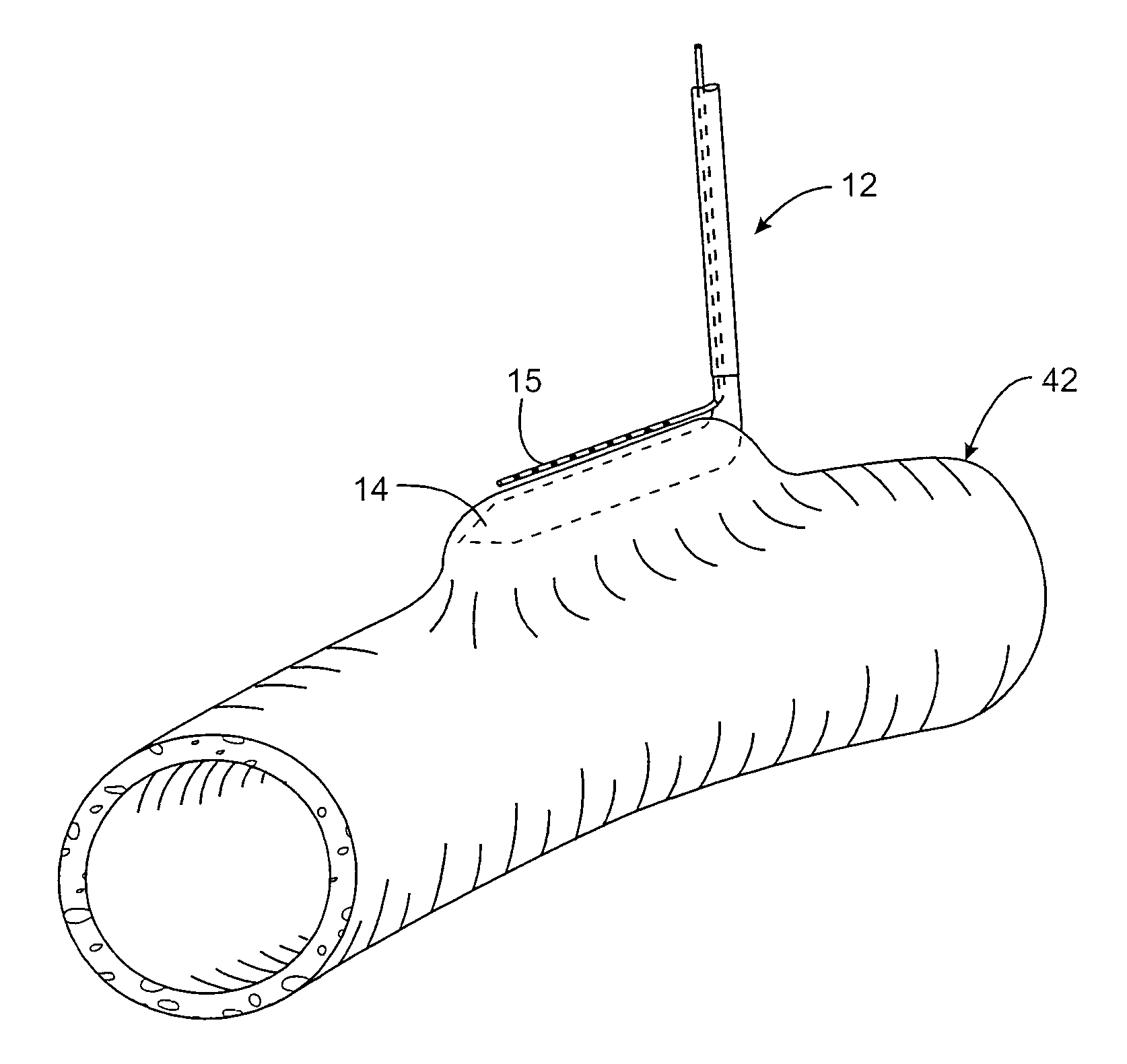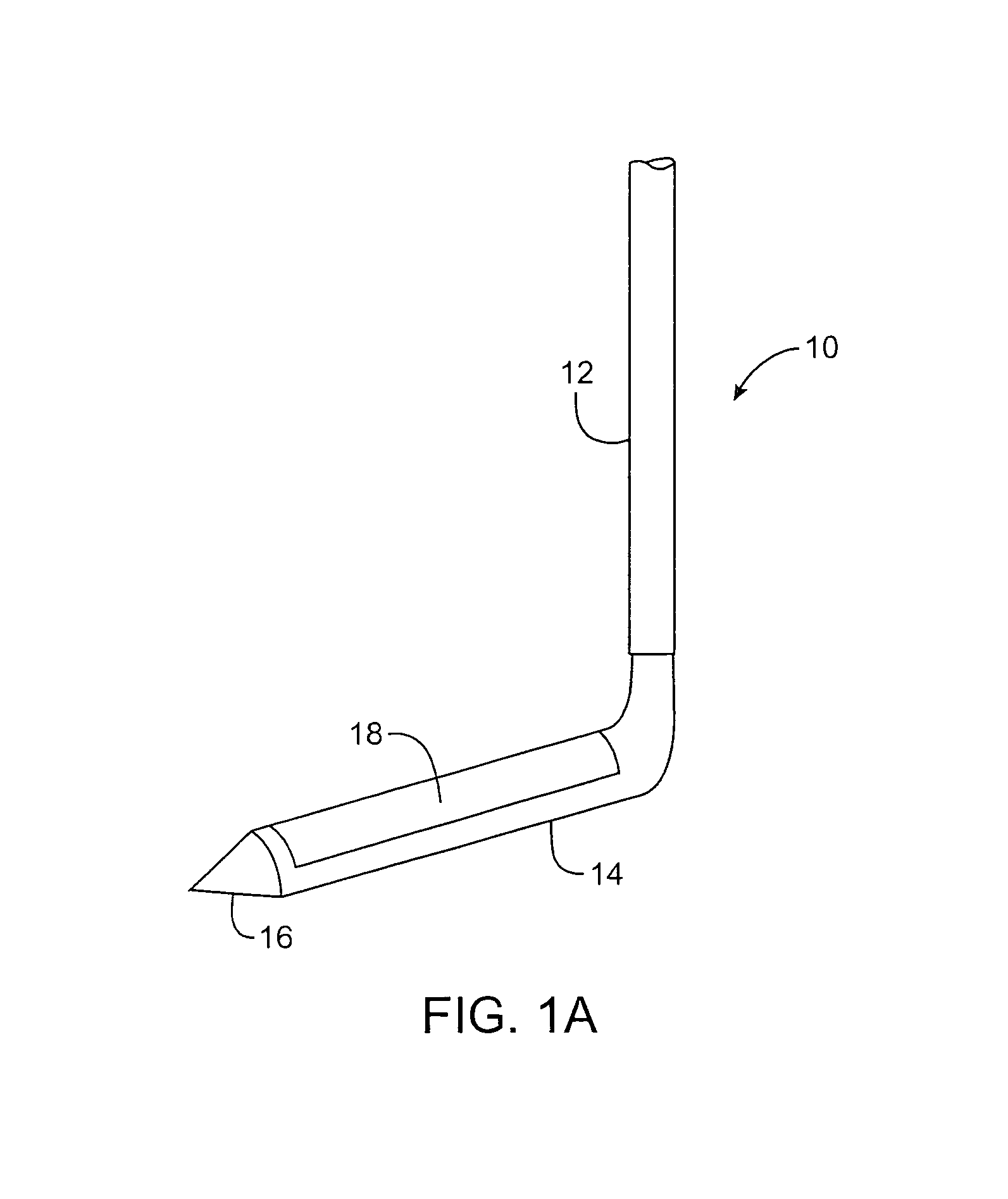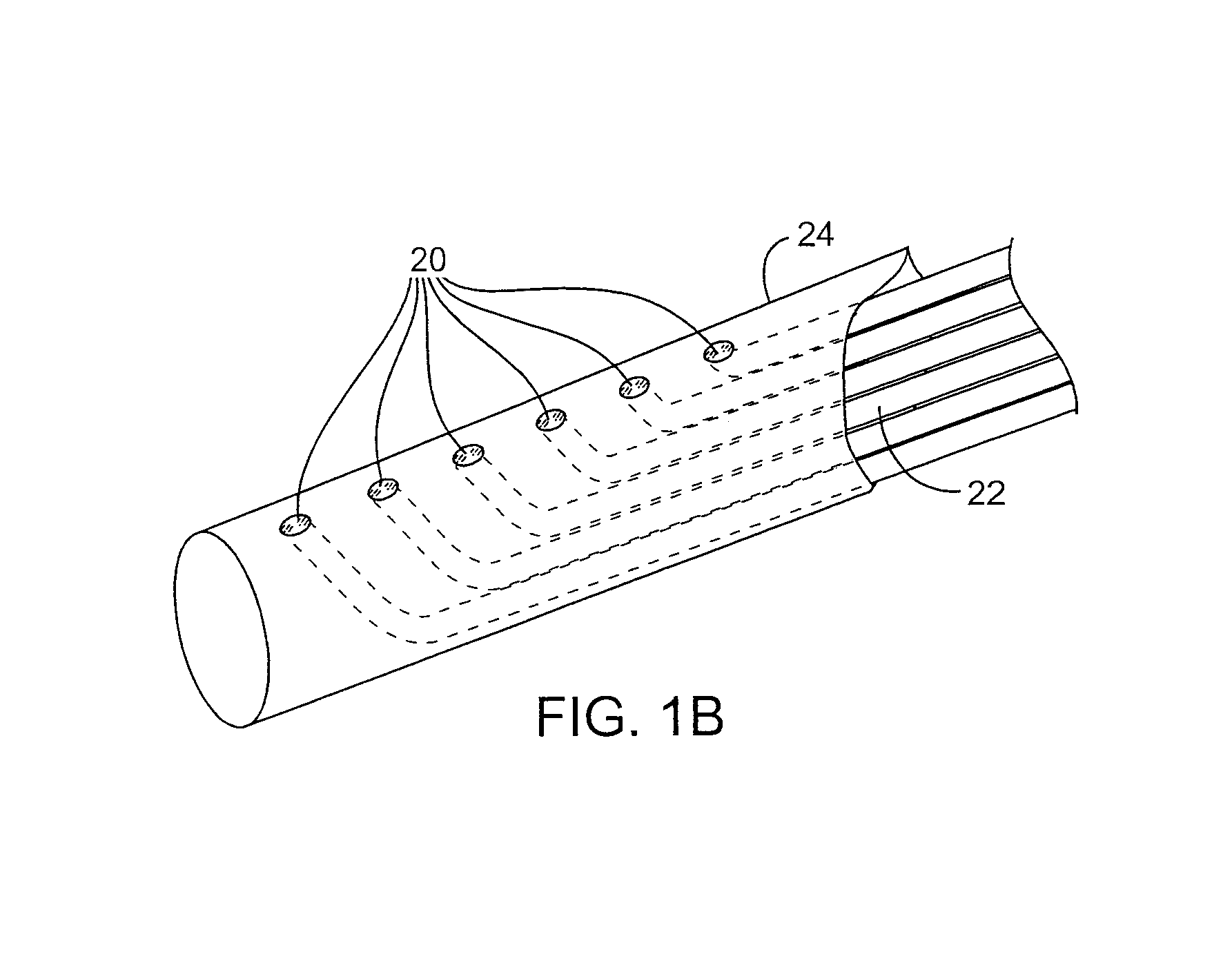Tissue bonding system and method for controlling a tissue site during anastomosis
- Summary
- Abstract
- Description
- Claims
- Application Information
AI Technical Summary
Benefits of technology
Problems solved by technology
Method used
Image
Examples
Embodiment Construction
[0047]The anastomosis system and method according to the present invention uses an anvil to control and support a tissue site during an anastomosis procedure wherein the graft and target vessel are attached together using a tissue bonding procedure such as adhesive bonding or tissue welding. The anvil is particularly useful for supporting a wall of a coronary artery during attachment of a graft vessel to the coronary artery in a coronary artery bypass graft procedure. The anvil supports the wall of the coronary artery which is generally very thin, difficult to grasp, and susceptible to tearing. Although the present invention is particularly useful for performing anastomosis on blood vessels and for controlling very thin tissues such as the walls of the coronary arteries, the anvil may also be used for performing anastomosis on other vessels and for controlling other tissue sites.
[0048]As shown in FIG. 1A, an anvil 10 according to one aspect of the present invention includes a handle...
PUM
 Login to View More
Login to View More Abstract
Description
Claims
Application Information
 Login to View More
Login to View More - R&D
- Intellectual Property
- Life Sciences
- Materials
- Tech Scout
- Unparalleled Data Quality
- Higher Quality Content
- 60% Fewer Hallucinations
Browse by: Latest US Patents, China's latest patents, Technical Efficacy Thesaurus, Application Domain, Technology Topic, Popular Technical Reports.
© 2025 PatSnap. All rights reserved.Legal|Privacy policy|Modern Slavery Act Transparency Statement|Sitemap|About US| Contact US: help@patsnap.com



